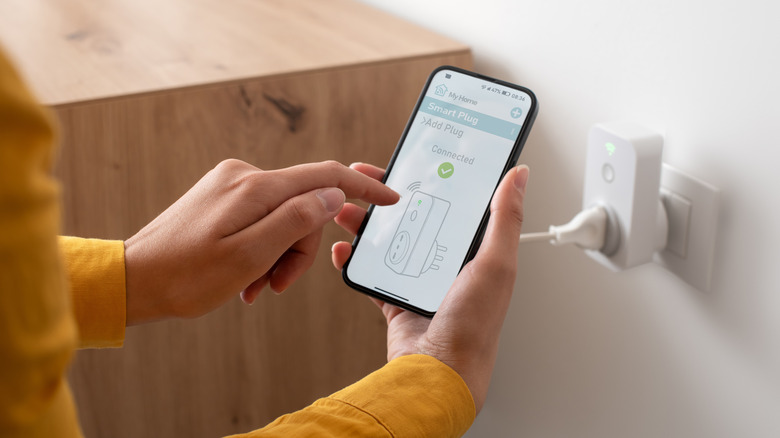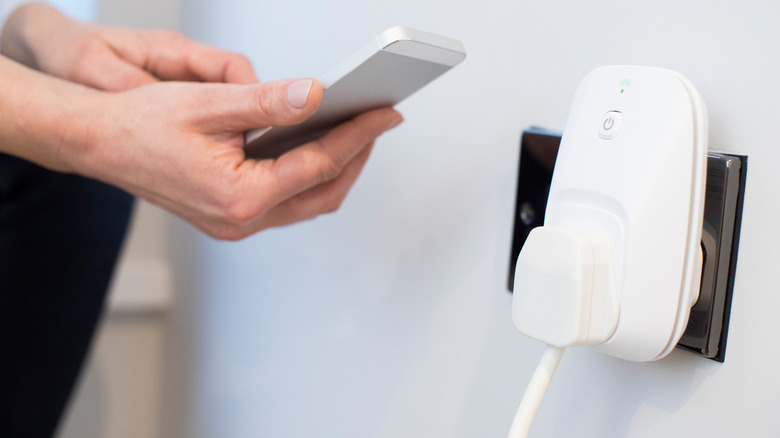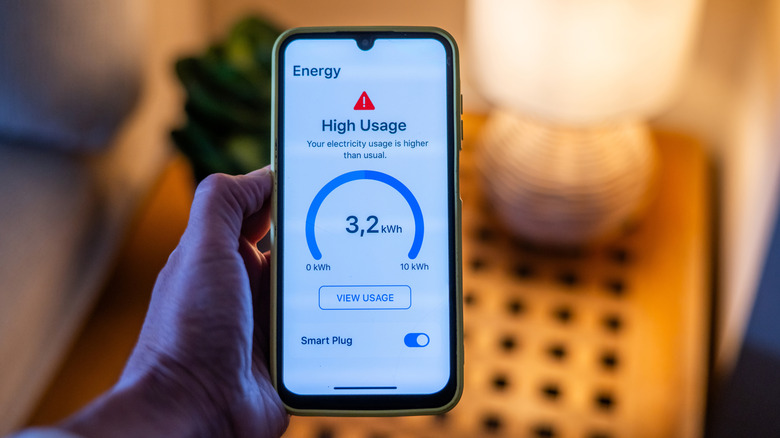How A Smart Plug Can Make Your Utility Bills More Affordable
With the cost of living rising every day, homeowners are always looking for ways to save money. Utility costs are unavoidable because we all need access to essential services like electricity, water, and gas, so it can seem impossible to bring down those costs. However, if you're wondering why your electric bill is through the roof, a smart plug is an effective tool which can help you save money by reducing the amount of standby energy consumed, allowing you to remotely turn off items, and create schedules for appliances.
A smart plug is a small device that plugs into nearly any traditional wall outlet. It features its own outlet openings on the front or side, so you can plug in lamps or appliances to access electricity through the smart plug rather than directly through the outlet. It offers wireless connectivity, too, so you can control the plug through an app on your phone or tablet, or via a smart home hub device. In the app, you have remote access to the plug and can create schedules to turn devices or lights on and off at specific times. By giving you greater control over your home's energy consumption and using very little power on its own, a smart plug can make a big difference to your electric bill.
How smart plugs can help save on energy costs
Most of us assume that our lamps and appliances aren't using any power once we turn them off. But the fact is that if these devices are plugged into an outlet, they can still draw power. In particular, devices like televisions, game consoles, computers, internet modems, routers, and microwaves utilize this "vampire energy" even when they appear to be turned off, thanks to their standby mode, which is designed to save time when they're switched back on. Surprisingly, this vampire energy can make up between 5 and 10 percent of home energy use.
A smart plug functions as a remote control for the outlet it's plugged into. That allows you to completely turn off the power to an appliance without actually unplugging it, limiting the energy used by devices in standby mode, and reducing your energy costs at home. Because a smart plug connects to your Wi-Fi network, you can remotely turn off connected devices when away from home, for more effective control over your energy usage.
Best of all, smart plugs use a very small amount of energy, typically just 1 to 2 kilowatts when connected to Wi-Fi in standby mode. If the plugs are equipped with Z-Wave or Zigbee — wireless radio frequency protocols that allow you to monitor, control, and check the status of your connected devices — their standby energy consumption can fall to as low as only 0.3 to 0.6 watts.
Tips for maximizing the cost-saving benefits of smart plugs
Since vampire or standby energy can be a hidden driver of rising home energy costs, the easiest way to save on your electric bill is to pair smart plugs with devices known to use phantom power. Group your entertainment devices, such as your TV, gaming console, streaming device, cable box, and soundbar, on a smart plug to reduce their energy consumption even when turned off. Similarly, with their constantly-on clocks and digital displays, kitchen appliances like your microwave, toaster oven, and coffee maker are also known as vampire energy consumers, making them good candidates for a smart plug.
The scheduling feature that smart plugs offer can further reduce your energy costs. It can come in handy for simple tasks, like powering down a lamp you always forget to turn off at bedtime, but it also allows you to avoid using devices during peak usage hours. For example, you can schedule your air conditioner to turn on before you get home, so your house is cooled off during off-peak hours.
Some smart plugs even monitor energy consumption, helping to identify devices around your home that are using large amounts of power. They may alert you that it's time to upgrade to a more energy-efficient appliance, which can certainly help make your utility bills more affordable.


